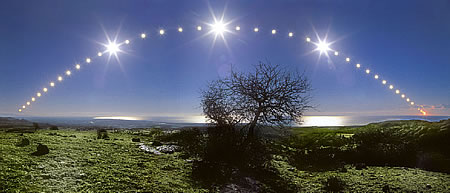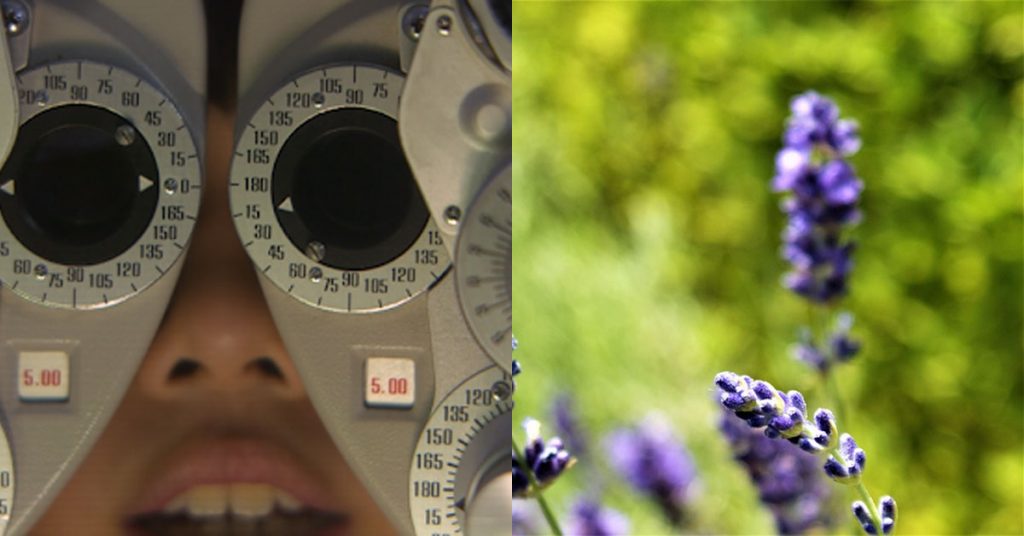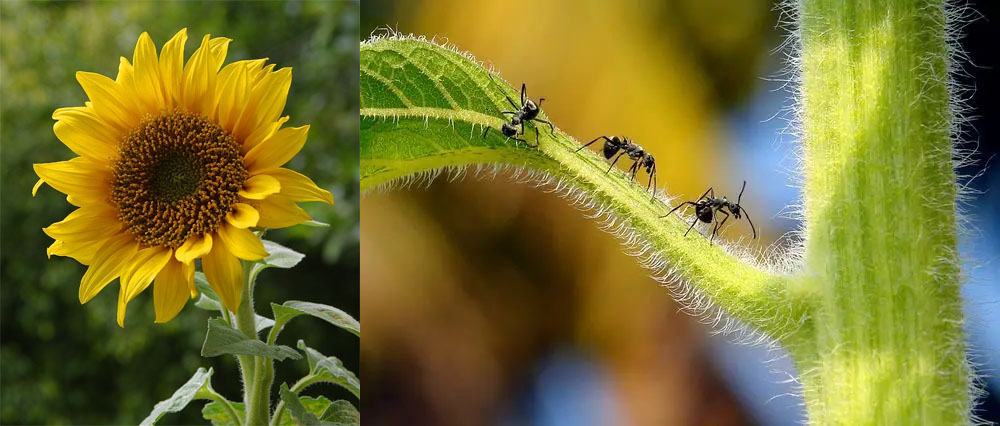The night of December 22 is the longest of the year, lasting 14 hours and 29 minutes. On that day the Sun will reach the point in its annual orbit called the “Winter Solstice“, when the winter season officially begins. Calendar-wise, the Winter Solstice currently falls between December 20 and 23, although the last time we had the Winter Solstice on December 23 was in 1903 and the next one will be in 2303. Even rarer is December 20 with the next one occurring in 2080. These variations are due to the Gregorian calendar of which each year has 365 days except for leap years with their 366 days. Things, however, have not always been this way. So let us take it from the beginning.
From ancient times, the calculation of the year was still done by observing the effect on the Earth of its orbit around the Sun, the effect of the cycle of the seasons! These seasonal changes were of enormous importance to the ancients, especially after the emergence of agriculture about 10,000 years ago. For this reason, and because sowing, harvesting and other agricultural activities depended on the changes of the seasons, the duration of a solar year had to be measured precisely.
The Earth completes one complete orbit around the Sun in about 365.25 days. Each day the Earth is in a different position from where it was the day before. So from each new position we see the Sun from a different angle and it appears that the Sun is in front of different stars (as it moves from west to east), precisely because of the Earth’s movement in its orbit. Every time the Earth completes a full orbit around the Sun, it appears to us that it was the Sun that completed a circle around the Earth. This circle is called an “ecliptic”, and it depicts the extension on the celestial sphere of the Earth’s orbit around the Sun.
If we observe the ecliptic and compare it with the celestial equator (the extension of the Earth’s equator on the celestial sphere), we will see that these two circles do not coincide, but instead intersect, forming an angle of about 23.5 degrees, due to the inclination of the Earth’s axis relative to the plane formed by the ecliptic. This angle is called the ‘ecliptic hump’, and the two points at which the two circles intersect are called the ‘equatorial points’. At the first point, the celestial equator intersects the ecliptic where the Sun is on 20-21 March. This point is called the “vernal equinox”, and from this day spring begins. Diametrically opposite, the intersection occurs when the Sun is on September 22-23. This point is called the “autumn equinox”, and from this day onwards Autumn begins.
From the vernal equinox onwards, the Sun is seen daily climbing higher and higher in the northern hemisphere of the sky. The days get longer, the nights get shorter, and the weather gets warmer and warmer. About three months later, on 20-21 June, the Sun reaches the northernmost point of the ecliptic from which it will now begin to descend, “trekking” back towards the equator. This point, on 20-21 June, is called the summer tropic or simply the summer tropic, because the Sun is again running towards the equator, and from this day onwards summer begins. In fact, because for a few days before and after the summer solstice the Sun seems to linger on the ecliptic as if about to stop, the summer tropic is also called the summer solstice.
After the summer trope, the Sun continues to descend south, and on September 22-23 it reaches the autumn equinox, so, like the vernal equinox, we have equal day and night: the equinox. But the Sun’s descent continues until, on December 21-22, it reaches the southernmost point of its orbit, called the winter tropic, or simply winter tropic or winter solstice. From this day onwards, Winter begins. But from then on, the Sun stops descending and starts climbing again, higher and higher each day.
During Winter, the Sun’s rays fall on the Earth’s northern hemisphere in a diagonal manner, while the opposite happens in the southern hemisphere, so they have Summer there. During Spring, the Sun is just above the Earth’s equator, so both hemispheres receive the Sun’s life-giving rays in the same way. During Summer the Sun favors the Northern Hemisphere, its rays fall on us more vertically, and while we have Summer, the Southern Hemisphere has Winter. Finally, in Autumn, the Sun is again above the Earth’s equator, with an equal distribution of heat in both hemispheres.
It is therefore not surprising that the Sun was worshipped by the ancients as a god, since for them the Sun was the creator of the seasons of the year and the cycle of phenomena and the alternations associated with them, from sowing to vegetation and from flowering to harvest. The Egyptians called him Ra, Aton, or even Osiris. The Babylonians called him Samah, Baal, Marduk, and Nergal. The Indians called him Brahma and Vishnu. And the Persians called him Mithra. To the ancient Greeks, on occasion, he was Zeus or Pluto, Bacchus, Dionysus, or even Phoebus Apollo. Regardless, however, of the name given to him, all peoples without exception established in honor of the Sun, famous and numerous festivals, especially in the periods of alternations from one age to another.
The greatest of these festivals took place in all countries and tribes at the time of the winter solstice, on the 25th of December. It was the celebration of the birth of the Sun, and not without reason. For as winter approached and the noon Sun appeared lower and lower on the horizon, the days grew shorter and the cold increased. It was the hard season for man with its very short days and endless nights. Cares multiplied, worries increased, and a vague feeling of fear gripped ancient man with his almost non-existent means of defense and limited food sources.
For this reason, prayers and sacred invocations were recited, fires were lit and sacrifices were offered to the sun god so that he would not disappear from the horizon for good. And indeed: after little hesitation, the god gave in. At his lowest point, in the constellation of Capricorn, at the gates of the Sun as the Chaldeans called him, he “changed” his mind, began to climb upwards again, and the days grew longer. A new order of things would come in again, beautiful as in the years before, when the Earth would blossom again thanks to the life-giving rays of the Sun. It is therefore not at all strange that the ancient peoples especially celebrated these days of the winter solstice. And this tradition of the ancient peoples was continued by the Greeks with the Cronia, and especially by the Romans with the Saturnalia and Brumalia and the central celebration of 25 December ‘Dies Natalis Invicti Solis’, i.e. the ‘Day of the Birth of the Invincible Sun’.
Saturnalia was the oldest Roman festival and was attributed to Romulus or Pelasgians. But it stood out from their other agricultural festivals in 217 BC. These festivals took on a festive character and had conquered the entire Greco-Roman world. They began with the Brumalia from 24 November to 17 December, followed by the Saturnalia from 18 to 24 December. On the central day of the festival of the ‘sunless sun’ on 25 December, the event of the sun’s turning, which began to rise again in the sky, the days grew longer, and with them the life-giving rays of the sun made the Earth fruitful again, was celebrated. On 1 January the Kalends were celebrated, on 3 January the Votas, on 4 January the Lorentalia, and on 7 January this period of festivities ended.
Since the early Christians were outlawed in Rome, and were not allowed to meet or worship together, they met secretly and in small groups in their catacombs, where they celebrated their religious feasts. To avoid persecution, therefore, they decided to celebrate Christmas on December 25, when the Romans were busy with their own Saturnalia celebrations. In this way they hoped not to be discovered by the celebrating Romans.
You may wonder, however, why the winter solstice does not occur today on December 25, as in the time of Christ, but on December 22? The problem begins with the Julian Calendar introduced by Julius Caesar in 44 BC, but it too had its own flaws because it lost a day every 128 years. So the Julian calendar had established the winter solstice on December 25, but over the years the added small error had shifted the actual date of the winter solstice. So in 325 A.D. the year of the Ecumenical Council of Nicea, the winter solstice had been moved and occurred on December 22. But the transposition of the Winter Solstice continued without correction until the year 1582, when the winter solstice occurred on December 12.
Then Pope Gregory XIII introduced a new reform, which is why the new calendar, the one we use today, is called the Gregorian calendar, and loses only one day in 4,000 years. To make a fresh start, the Gregorian reform moved the position of the calendar forward based on the year of the Council of Nicea rather than the year of the introduction of the Julian calendar, 44 BC. This is why the Winter Solstice occurs today on December 22, and the primary reason for celebrating Christmas on December 25 is now lost.
By Dionysis P. Simopoulos
Director of the Eugenides Planetarium
Tags: CHRISTMAS • SUN • WINTER SOLSTICE





